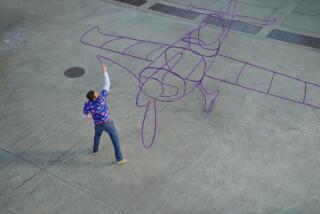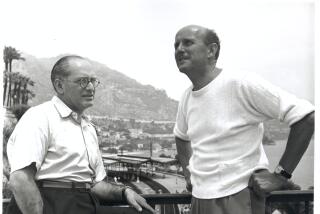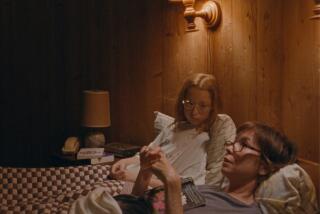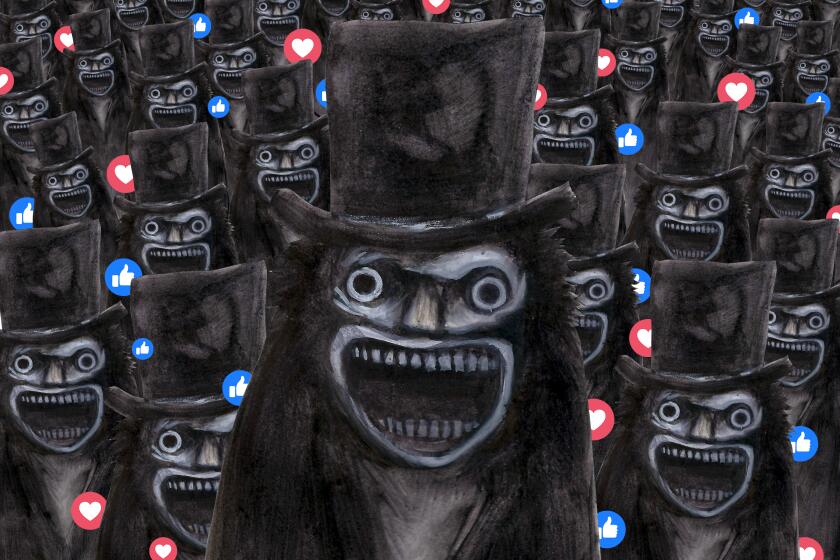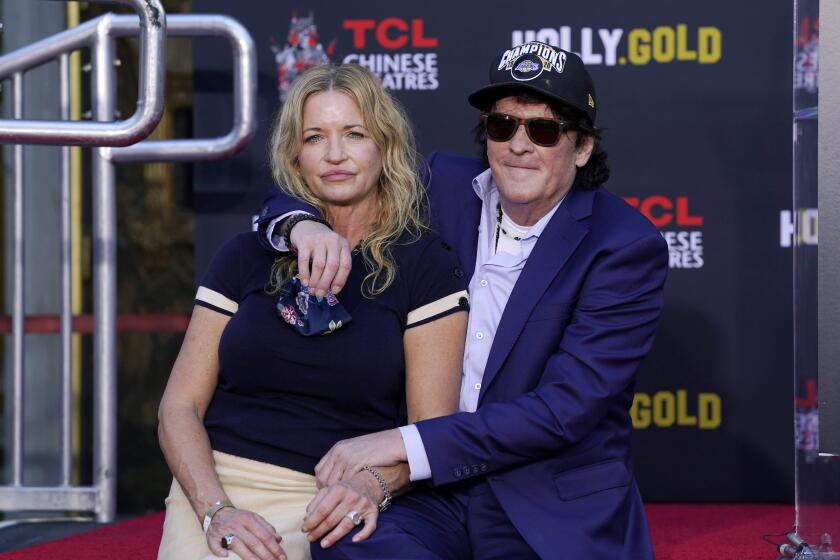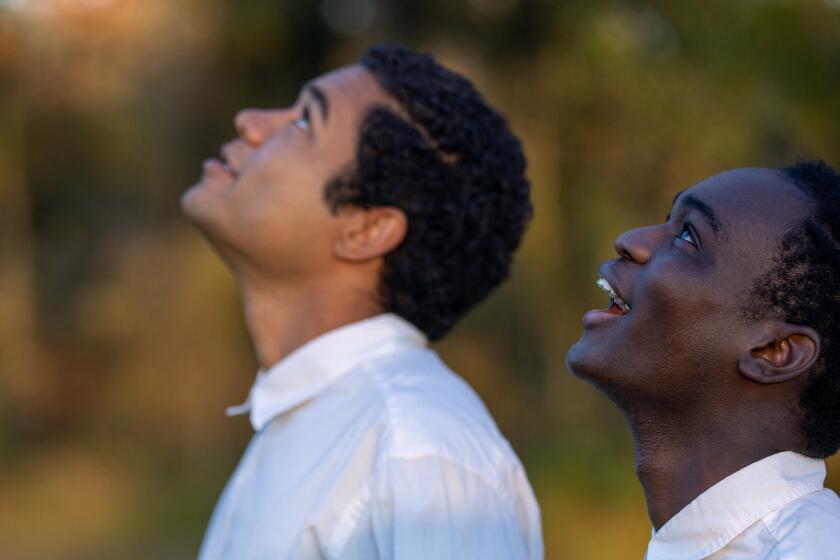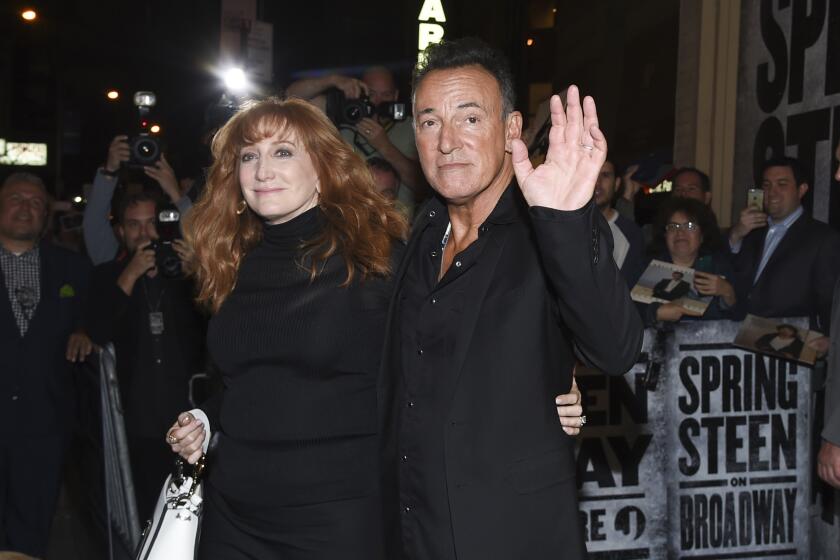With ‘Wonderstruck,’ Todd Haynes and his creative team unite eras
“Wonderstruck” is a film that takes place in two time periods, 50 years apart. In 1927, a young girl travels alone to New York City; in 1977, a young boy does the same. The mysterious connection between their stories becomes the movie’s driving force.
What the picture also united was a creative team of collaborators that director Todd Haynes trusted to bring this unusual story to the screen. Cinematographer Ed Lachman, costume designer Sandy Powell, production designer Mark Friedberg and composer Carter Burwell all have longstanding relationships with Haynes, and they have come to collaborate with one other in ways that are unusual.
Brian Selznick wrote the screenplay for “Wonderstruck,” adapted from his own novel of the same name. In both versions, the young girl Rose is deaf from birth, while the boy Ben becomes deaf after being struck by lightning. (Actress Millicent Simmonds is deaf in real life, while actor Oakes Fegley is not.) For Haynes’ film, the style of each section aims to evoke the way its young protagonist interacts with the world.
“I found the material to be something out of the sensibility and the experience of children,” said Haynes. “Paralleling these two stories and not relying on dialogue to tell the story, the cinematic language, all of the elemental arts of cinema, had to step up and make the film work.”
Emphasizing the collaborative nature of his process, Haynes went on to mention not only Powell, Friedberg, Lachman and Burwell but also editor Affonso Gonçalves, casting director Laura Rosenthal, first assistant director Timothy Bird and even the team involved in casting extras.
A three-time Oscar winner, costume designer Powell was nominated for her work on Haynes’ “Carol” as well as Kenneth Branagh’s “Cinderella” in the same year. It was Powell who first knew Selznick from having worked on “Hugo,” Martin Scorsese’s adaptation of the author’s work, and she brought Selznick’s “Wonderstruck” screenplay to Haynes.
“Todd is an incredibly visual director,” said Powell, also credited as an executive producer on the movie. “Having worked with him on several projects, it’s so much easier. You’ve already developed a language between you. He’s very articulate when talking about visuals, and he has a keen eye. It’s just a joy to work with someone who is as excited by things as you are. And Todd always gives so much. At the beginning of a project, he always has a massive visual reference, so you’re already halfway there.”
Haynes’ ongoing collaborations help not just in his own relationships with each department but also to get those departments interacting as well.
“Because it’s a lot of the same people again and again, at this point, I [already] know people that on most films the composer wouldn’t really overlap with,” said Burwell. “We’ve spent time together, and I do actually know them. It did feel like very much a team.”
Lachman, who was nominated for Oscars for his work with Haynes on “Far From Heaven” and “Carol,” noted that he used research done by Friedberg’s art department in planning his own work. “Wonderstruck” provided Lachman with the opportunity to shoot in elegant black and white, evoking the graceful look of the silent era — there is even a brief silent film within the film — as well as the vibrant colors and more street-style photography reminiscent of New York cinema of the 1970s.
“I like to think of the images creating the emotions, or as I said it, that you’re hearing with the images,” said Lachman. “You’re seeing images that would obviously have sound, but now they’re either muted or natural sound. So we’re trying to create the subjectivity of someone who has lost their hearing. It’s really a film about listening with your eye.”
We’re trying to create the subjectivity of someone who has lost their hearing. It’s really a film about listening with your eye.
— “Wonderstruck” cinematographer Ed Lachman
Friedberg worked with Haynes on “Far From Heaven” and the HBO limited series “Mildred Pierce,” but the two have known each other since both attended Brown University. For Friedberg, the collaboration with Haynes was as much about evoking the times they were portraying as the specific details of moldings and colors.
In re-creating 1970s New York City, with scenes shot at a location in Brooklyn meant to depict a young boy’s arrival to the city’s Port Authority, Friedberg had an entire team adding trash to the shots to bring them more in line with the era of a Big Apple faced with a widespread blackout and the notorious “Drop Dead” headline.
“I’m really curious about the cultures of the worlds we’re creating,” Friedberg said. “It’s important to understand that as an organizing principle, so the work comes from an idea, to understand these times. The story we’re telling is in the context of these places. With Todd, on all the movies I’ve worked on with him, there is always an intellectual construct and an emotional one.”
Powell is known for her dazzling work in color, but she worked in black and white for the first time for the 1920s section of “Wonderstruck.”
“What was most important dealing with black and white was texture, finding fabrics that had a strong texture and a lot of contrast,” she said. “Ed Lachman asked particularly for things that had contrast. So I did all of that, but I still at the end of the day wanted Rose to wear things that looked nice to the eye, looked nice to us on set. I couldn’t send her out with clashing colors — just because I didn’t want to look at it.”
Composer Burwell, who was nominated for an Oscar for his score for “Carol,” began his work on “Wonderstruck” well before shooting. He and Haynes discussed how to handle the film’s distinct periods, how to evoke deafness in the score and whether the music should suggest the separate times or look to somehow unite them.
“We didn’t settle on real answers, but we have the discussions just so we can open up the questions,” said Burwell. “While he’s shooting, I’m doing research and thinking of all the different ways to address those questions. By the time he’s got a rough edit of the film, that’s when I’m really going to start writing music, but we already have a really firm grasp on the questions the film raises and hopefully, a slew of possible answers.”
The emotional climax of the 1977 section takes place at the “Panorama of the City of New York,” an enormous scale model housed in the Queens Museum and originally constructed for the 1964 World’s Fair. (In a delightful coincidence, Lachman’s older brother was involved in making the bridges for the “Panorama.”) The seemingly separate strands of the movie come together — in a sequence featuring another frequent Haynes partner, actress Julianne Moore — similar to how all of Haynes’ collaborators worked in concert.
“It was really about point, counterpoint,” said Haynes. “What I love about Brian’s concept at the core, and [what] felt so coherent, is this is a mystery.
“And the mystery keeps being furthered by the intercutting between the two stories. Every time you cut, that basic premise is rephrased, which is ‘Why are these two stories sharing one film? What are the things that link them?’ There is something underneath them we’re going to find out. That structure was the most creative challenge and excitement throughout the process.”
SIGN UP for the free Indie Focus movies newsletter »Mark.Olsen@latimes.com
Follow on Twitter: @IndieFocus
More to Read
Only good movies
Get the Indie Focus newsletter, Mark Olsen's weekly guide to the world of cinema.
You may occasionally receive promotional content from the Los Angeles Times.
